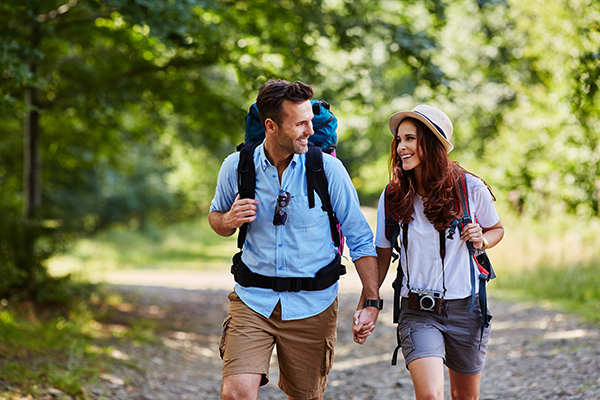It’s common to hear the phrase, “No pain, no gain,” in athletics. People often think that sore muscles are a sign of growth and progress. While it’s important to understand that persistent or substantial pain can be signs of bigger issues, there are ways to deal with the common discomfort that follows a tough workout. Tracy Brooks, PharmD, BCPS, BCNSP, CPE, Parkview Palliative Care Pharmacist, who also happens to be an avid runner planning to finish her 11th consecutive Fort4Fitness half marathon next week, has some pointers on pain relief. Specifically, those over-the-counter creams, gels and medications.
“If you run long enough and far enough it’s going to hurt no matter what kind of shape you’re in.”1 Each step absorbs three to five times its weight when you are running on a flat surface, more when running downhill.
The bad.
Delayed onset muscle soreness (DOMS) is a familiar experience for the elite or novice athlete. Symptoms range from muscle tenderness to severe debilitating pain. DOMS is most prevalent at the beginning of the running season following a period of reduced activity.
The ugly.
Health care professionals no longer advise taking common over-the-counter pain relievers like ibuprofen before or during a long distance race. The medication can harm your body. A study conducted by David Neiman2 on a group of athletes running the 100-mile Western States Endurance Race found that runners who’d taken over-the-counter ibuprofen pills before and during the race displaced significantly more inflammation and other markers of high immune system response afterward than the runners who hadn’t taken the anti-inflammatories. The ibuprofen users also showed signs of mild kidney impairment and, both before and after the race, of low-level endotoxemia, a condition in which bacteria leak from the colon into the bloodstream.
Cryotherapy, stretching, homeopathy, ultrasound and electrical current modalities have demonstrated no effect on the alleviation of muscle soreness. Massage has varying results depending on time of massage and type of massage.
The good.
Exercise is the most effective means of alleviating pain during DOMS, however the analgesic effect is temporary. So what can you do?
- Reduce the intensity and duration of exercise for 1-2 days following intense DOMS-inducing exercise.
- Cross-train on alternative days (allow most affected muscles to recover).
- Progressively increase the intensity of your training.
At times of rest (i.e. sleep), a topical pain reliever can be used to ease discomfort. Used immediately before a run, topical analgesics will not reduce the incidence of DOMS nor speed healing.
- All topical analgesics are equally effective (causing a cold or sometimes warm sensation in the area where the pain is coming from to numb the pain), so try a few and pick the one you prefer.
- If the pain persists during exercise, this could be a signal of a more severe injury.
Sources:
1. Anne-Marie Sheehan
2. Neiman DC, Henson DA, Dumke CL, et al. Ibuprofen use, endotoxemia, inflammation, and plasma cytokines during ultramarathon competition. Brain Behav Immun. 2006 Nov;20(6):578-84




